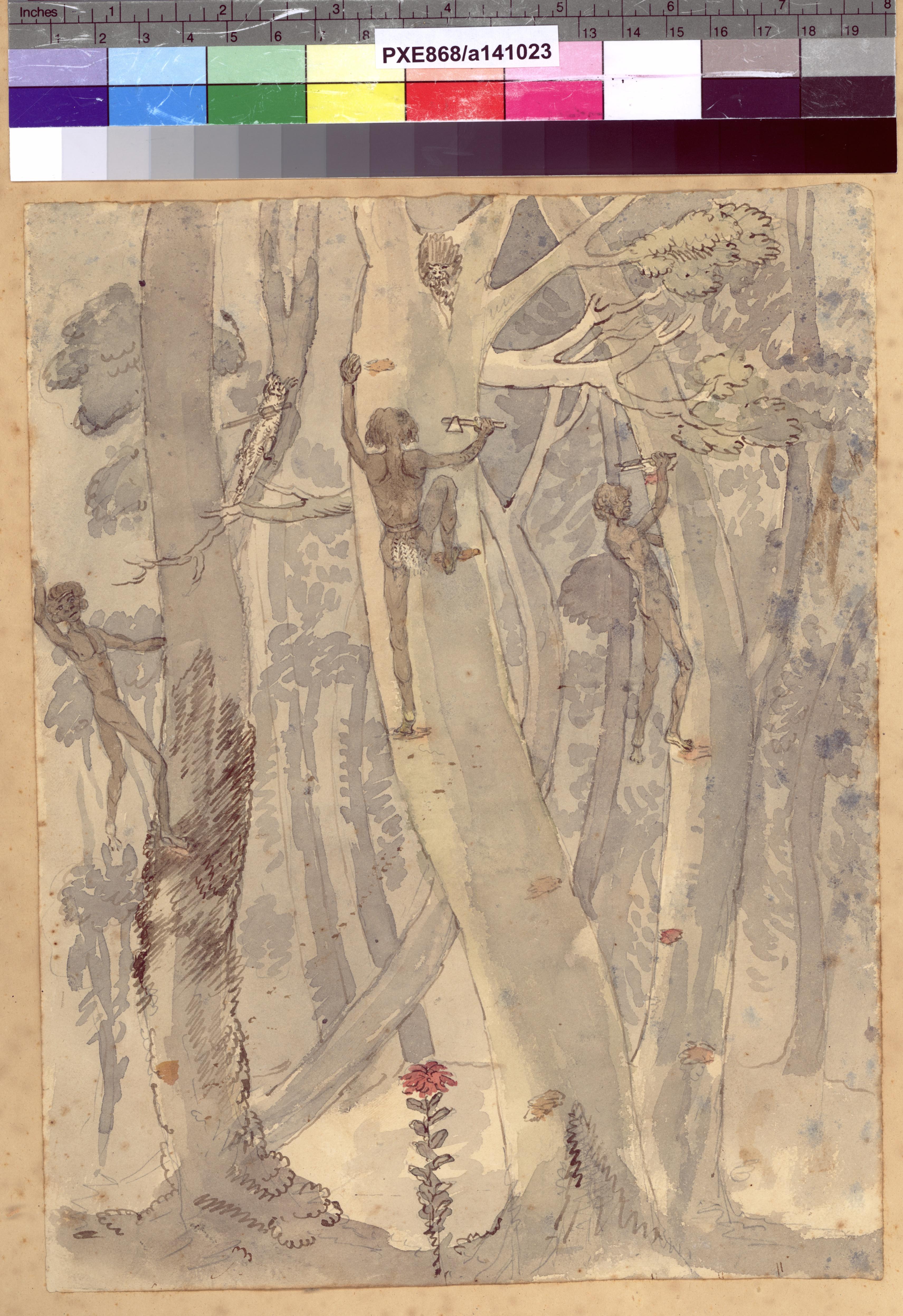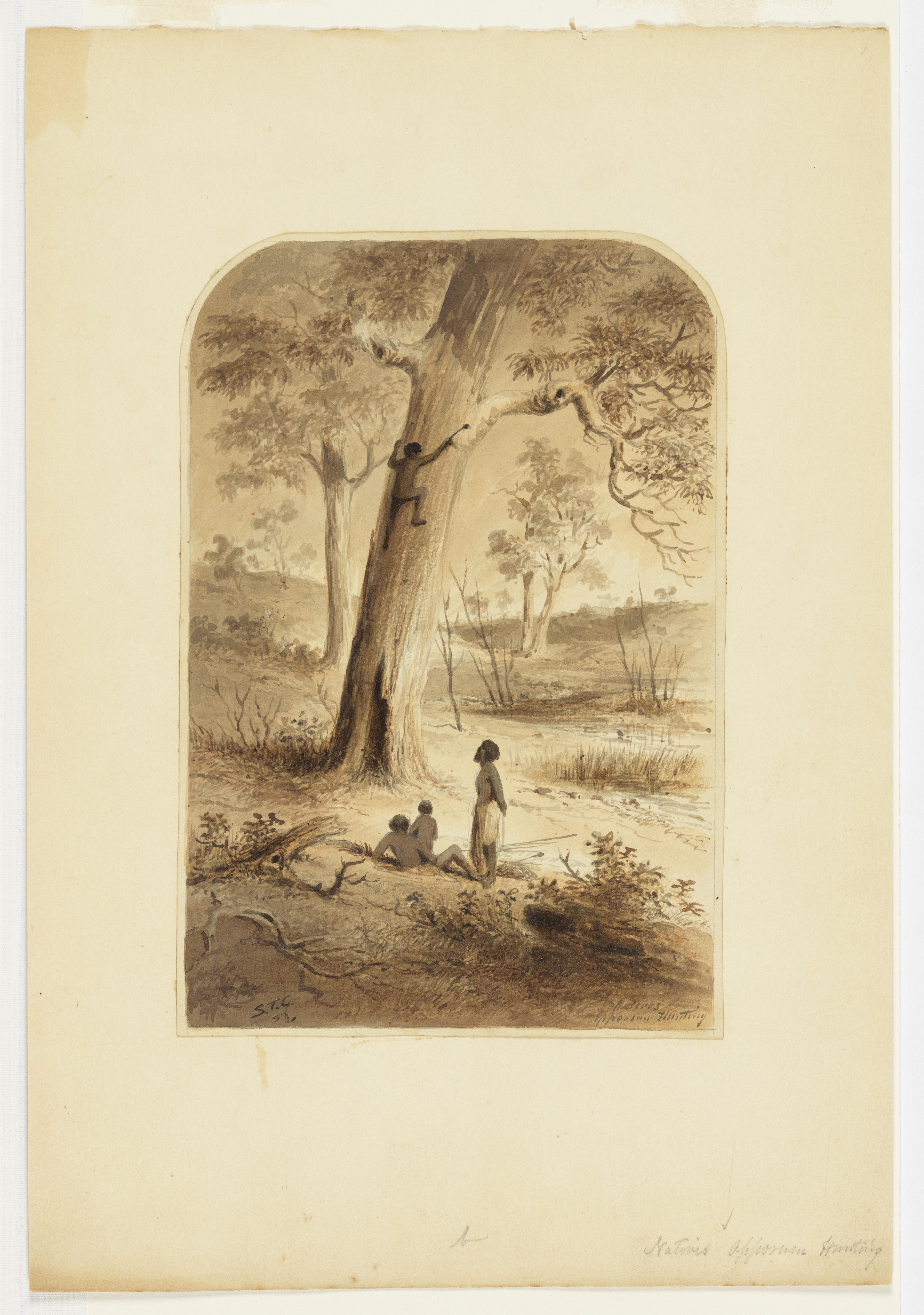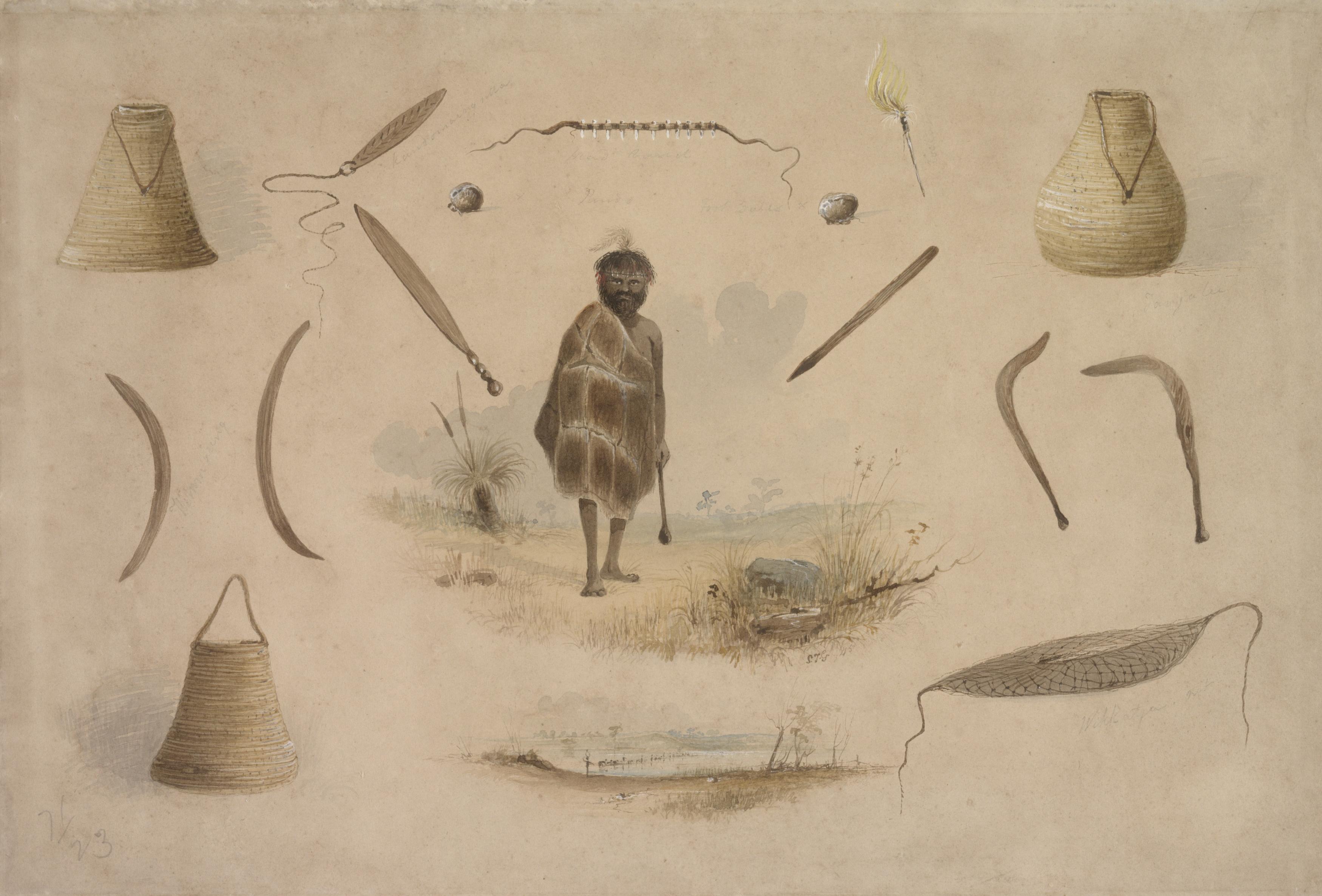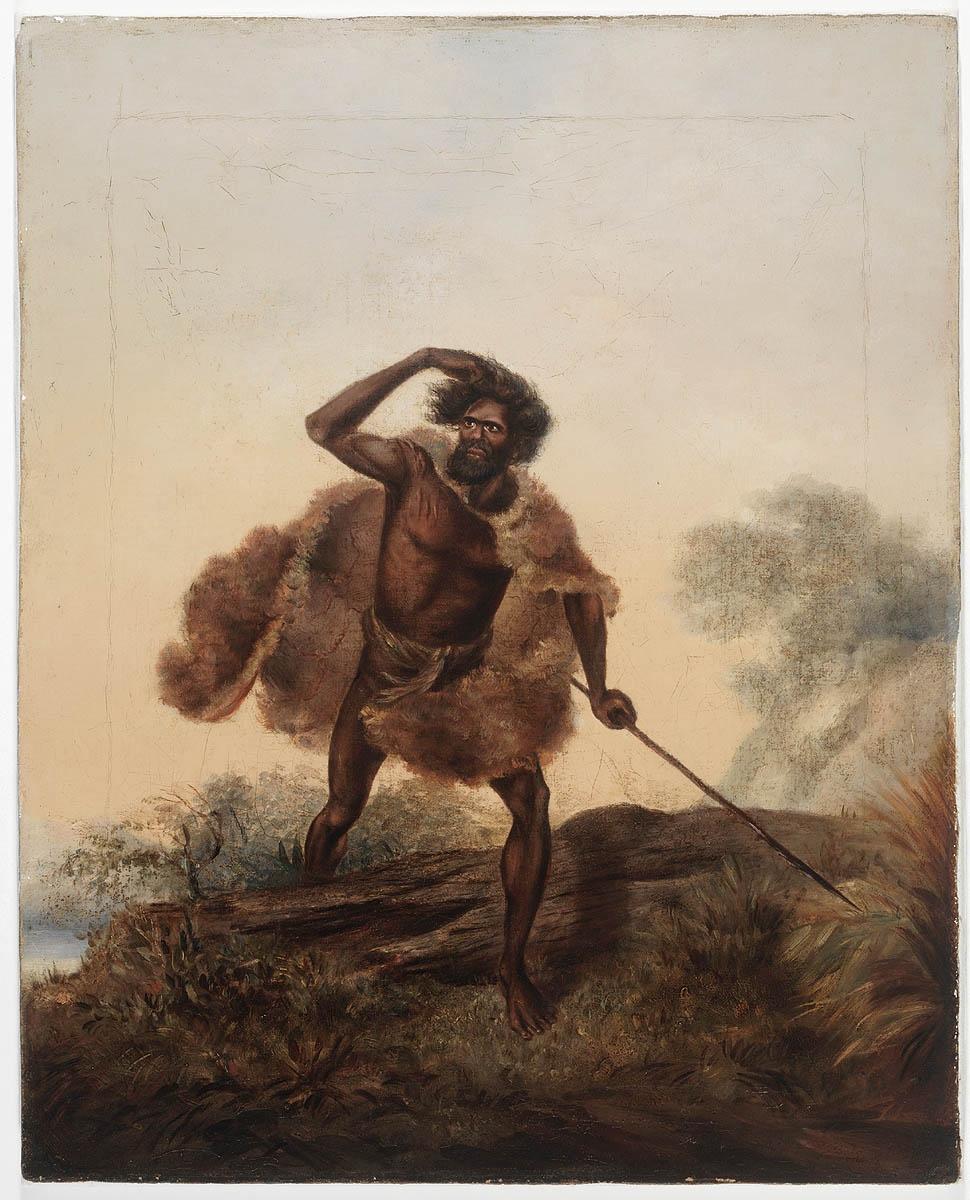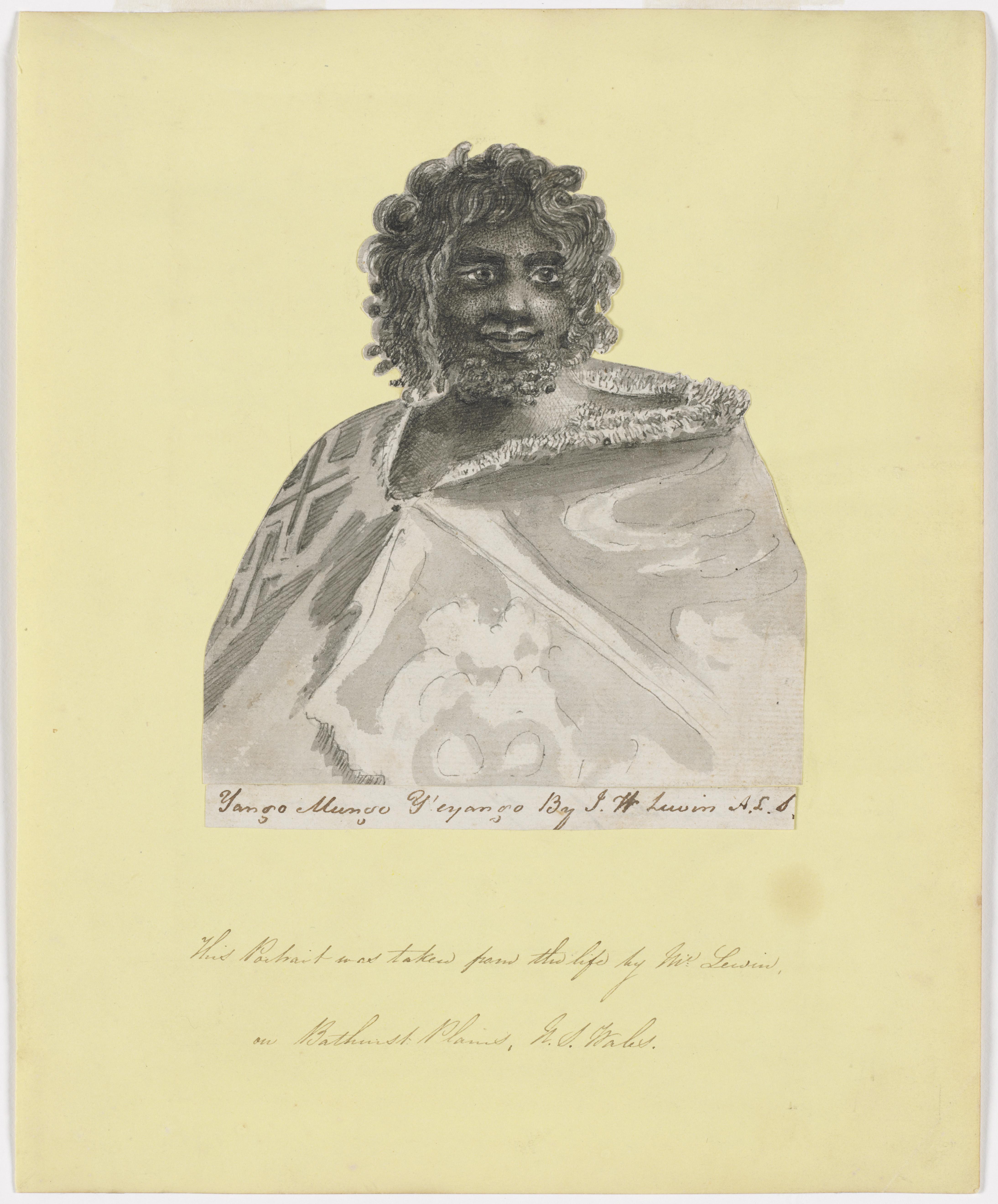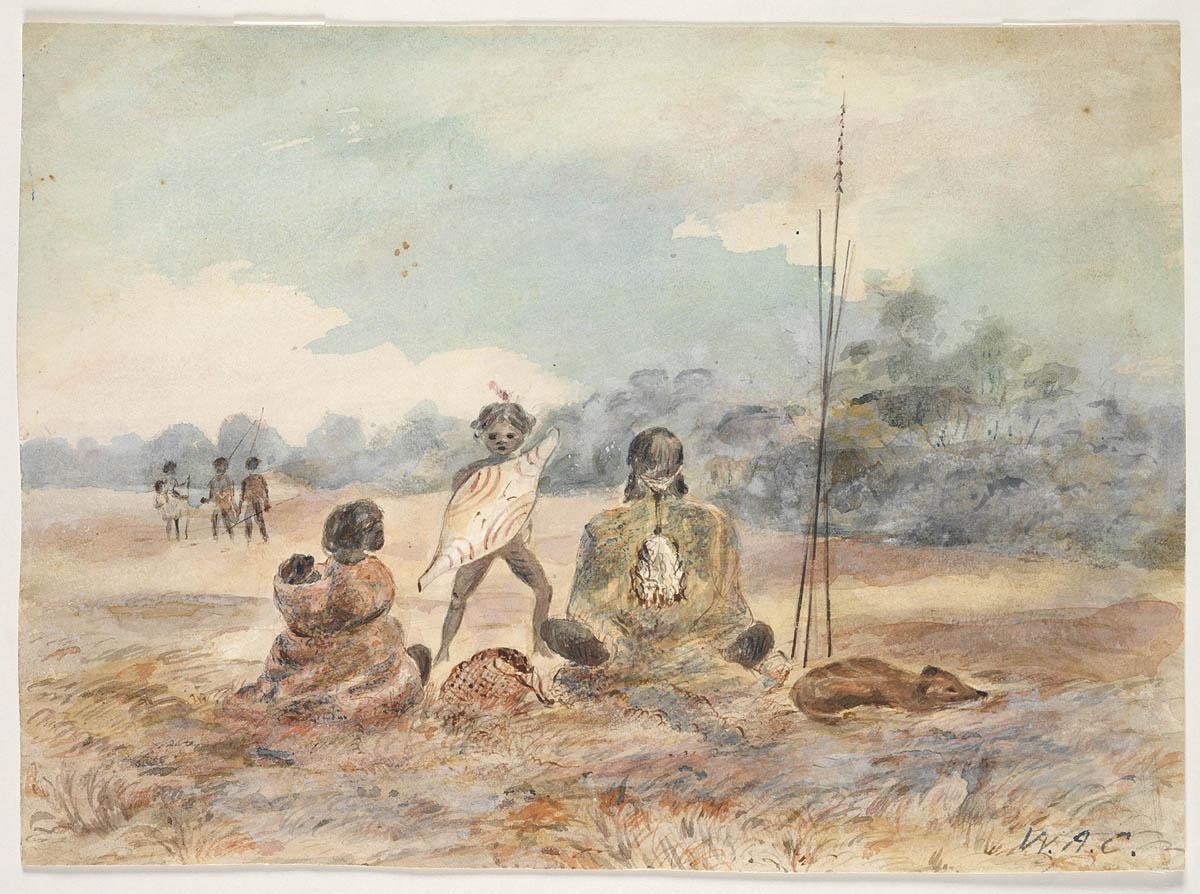Sewing Across Cultures
Students find that both colonists and Aboriginal people developed the skill of sewing.
This is the student activity 1 of 7 of the Convict clothing learning activity.
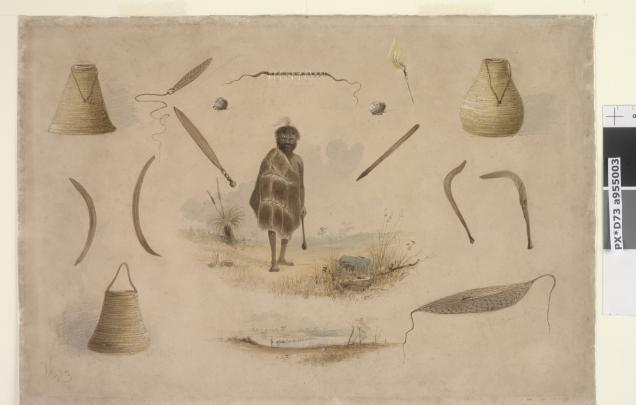
Sewing Across Cultures
Many of the people on the First Fleet brought their skills of sewing to the new colony to make and repair their own clothing. Aboriginal people were also themselves highly skilled in sewing. Detailed sewing was used in the creation of possum-skin cloaks by Aboriginal people in south east Australia.
Read Surgeon John White’s memory of meeting Aboriginal people at Manly Cove in August 1788:
One of them wore a skin of reddish colour round his shoulders.
Read Lieutenant William Bradley’s description of a cloak in June 1789:
Made of the skins of small animals sew'd or laced together, somepart was of the Opossum skin… these were curiously carved on the inside, every skin having a different pattern & the whole formed a peice that was supposed they might use to cover a child with: The Needle they use was found; It is a hard peice of wood… with which they make holes (it not having an eye) to receive the thread which was found & appears to be the sinewy fibres from the tail of some small animal.
Look at the images, below, of possum catching.
Brush tail possum-skins were cleaned, pegged out to dry and then the leathery side was rubbed with animal fat to make them softer. Both men and women in Aboriginal communities were part of the cloak creation. The cloaks were sewn using ‘needles’ made from hard wood or animal bone and the thread was created from the sinews of a kangaroo tail. Very small neat stitches were used to create the cloaks and small cuts, using a sharp bone as a knife, were used to carve decorative patterns and record stories onto the leathery side of the skin. Making the cloak took a long time. When it was finished, the possum-skins were then coloured with ochre. To wear it, a pin was made from bone or wood would keep the two sides together around the neck. In other parts of the country kangaroo skin was also used by Aboriginal people to make cloaks.
Look at the images, below, of animal skin cloaks. Zoom in on the second image to see patterns on the inside of the cloak. Next to his chest on the left you can see very faintly - lines, a swirl and circles with dots. The third image is the cloak being worn with the fur against the skin.
Research what makes possum fur unique.
Answer these questions:
- Why would possum skin and fur be preferred in the areas of south eastern Australia?
- What uses are there for the possum-skin cloak? [Answers in Additional Information.]
- None of the possum was wasted. How do you think Aboriginal people used the other parts of the possum? [Answers in Additional Information.]
Look at the painting, below, of an Aboriginal family. Notice the mother and father wearing cloaks and the young baby wrapped around its mother’s back with an animal skin cloak.
Everyone had a cloak for life. As you outgrew your cloak more possum-skins were sewn on to make it larger. The cloak told your life story. The markings and symbols cut into the possum-skin recorded your life events, such as, an initiation ceremony. At the end of your life you may be buried with your possum-skin cloak.
Research possum-skin cloaks made by contemporary Aboriginal artists today. Notice their stories told through patterns, symbols, colour and design.
Design a cloak that would reflect the important events and values in your life.
